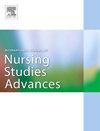手术室技术对术中护士工作量和工作满意度的影响:一项观察研究
IF 3.1
Q1 NURSING
International Journal of Nursing Studies Advances
Pub Date : 2025-04-29
DOI:10.1016/j.ijnsa.2025.100341
引用次数: 0
摘要
医疗技术在手术室的整合已经彻底改变了外科工作流程和团队动态。然而,这一进展与全球护士严重短缺和现有护理人员的高流失率同时发生,影响了患者护理质量、护士福祉和医院财务。本研究调查了技术复杂性对术中护士工作量和工作满意度的影响,重点是荷兰一家学术医院妇科的开放手术、微创手术和机器人辅助手术。方法研究设计采用混合方法,结合定性和定量方法评估三种手术方式的护理经验。具体而言,我们进行了5次访谈,分发了28份有效问卷,对35次记录的手术进行了自动视频分析,并分析了包含411例病例的医院数据集。数据收集于2022年和2023年进行。结果发现术中护士的工作量和工作满意度随技术水平的不同而不同。开放程序显示出最高的工作满意度,其特点是持续参与和可管理的工作量。微创手术虽然对身体的要求较低,但介入程度较低,满意度较低。机器人辅助手术带来了最大的挑战,工作量增加,参与率降低,手术准备、技术复杂性和团队动态变化带来的压力增加。结论医疗技术的进步提高了手术效果和效率,但往往忽视了对术中护士的影响。沟通问题、设备挑战和有限的技术培训是导致倦怠和离职的原因。本研究强调需要支持性手术室环境,优先考虑护士的福祉。通过检查技术、工作量和满意度之间的联系,它提供了保留和授权护理人员的策略。它还展示了自动化视频分析如何客观地评估护理角色,突出了在手术室中平衡技术与以人为本的护理的重要性。研究注册:未注册本文章由计算机程序翻译,如有差异,请以英文原文为准。
Impact of operating room technology on intra-operative nurses' workload and job satisfaction: An observational study
Background
The integration of medical technology in the operating room has revolutionized surgical workflows and team dynamics. However, this progress coincides with a critical global shortage of nurses and a high turnover rate within the existing nursing workforce, impacting patient care quality, nurses' well-being, and hospital finances
Aim
This study investigates the impact of technological complexity on the workload and job satisfaction of intra-operative nurses, focusing on open surgery, minimally invasive surgery, and robotic-assisted surgery within the gynecology department of a Dutch academic hospital.
Method
The study design follows a mixed-methods approach, combining qualitative and quantitative methods to assess nursing experiences across three surgical modalities. Specifically, we conducted 5 interviews, distributed 28 validated questionnaires, performed automated video analysis on 35 recorded surgeries, and analyzed hospital datasets encompassing 411 cases. Data collection took place in 2022 and 2023.
Results
Findings show that intra-operative nurses experience varying levels of workload and job satisfaction depending on the level of technology. Open procedures showed the highest job satisfaction, characterized by continuous engagement and manageable workloads. Minimally invasive surgery procedures, while less physically demanding, were associated with reduced involvement and lower satisfaction. Robotic-assisted procedures presented the most significant challenges, with increased workload, reduced involvement, and heightened stress stemming from surgery preparation, technological complexity, and altered team dynamics.
Conclusions
Advancements in medical technology improve outcomes and efficiency but often neglect their impact on intra-operative nurses. Communication issues, equipment challenges, and limited technical training contribute to burnout and turnover. This study underscores the need for supportive operating room environments that prioritize nurses’ well-being. By examining the link between technology, workload, and satisfaction, it offers strategies to retain and empower nursing staff. It also shows how automated video analysis can objectively assess nursing roles, highlighting the importance of balancing technology with human-centered care in the operating room.
Study registration
Not registered
求助全文
通过发布文献求助,成功后即可免费获取论文全文。
去求助
来源期刊

International Journal of Nursing Studies Advances
Nursing-General Nursing
CiteScore
5.80
自引率
0.00%
发文量
45
审稿时长
81 days
 求助内容:
求助内容: 应助结果提醒方式:
应助结果提醒方式:


